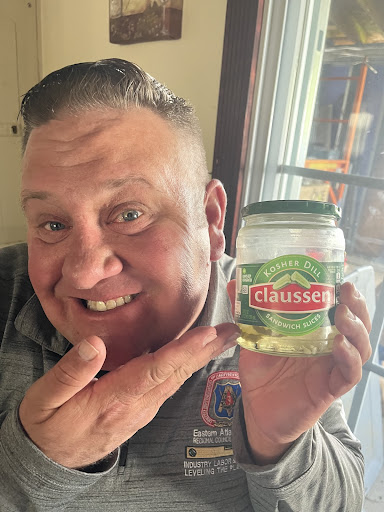By Dakota Kalman
Staff Writer
Under the Stand Your Ground laws, an extension of the Castle Doctrine which allows deadly force to defend against an intruder without becoming liable to prosecution, any citizen has the right to protect them wherever they are legally allowed to be; however this does not necessarily mean it’s the right thing to do. Killing in self-defense makes everyone a victim.
Daniel Adkins Jr., 29, with the mental capacity of a 13-year-old, was walking past a Taco-bell drive through at eight o’clock on Apr. 3 2012, when a 22-year-old man pulled around to pick up his order with his pregnant fiancée sitting in the passenger’s seat. Adkins was believed to be carrying a 3-foot bat and after an exchange of angry words the driver, who feared for his and his family’s safety, pulled a Smith and Wesson .40-caliber handgun from his sweatpants and shot Adkins. After being shot in the chest, Adkins died shortly at the scene.
Dan August, Neshaminy English teacher, said “I don’t think I’d go as far as shooting him. Going to that extreme isn’t necessary.” Where do you draw the line as to what is acceptable in self-defense? A split second decision can make a large impact on the rest of your life as well as someone else’s. This escalates a situation that may not have had to go so far and leaving victims in its wake.
Nov. 3, shortly after 2 a.m., James Workman, elderly hurricane Ivan victim, was put into a situation where he shot and killed 35-year-old Rodney Cox. A week or two before the police had to subdue a man with a machete at the house next door, Cox stumbled on to Workman’s property asking for a drink of water he wasn’t welcomed warmly. Cox was asked to leave but instead bolted into the trailer where Kathryn, Workman’s wife, was backed up against a kitchen sink.
In some cases, like the Cox case, both parties are victims and it comes down to those 30 seconds in which you have to make a difficult choice: whether or not to take someone’s life in an attempt to save your own. Mark Dengler, a social studies teacher at Neshaminy, said “If someone breaks into my house, they have a serious problem.”
Jose Luis Gonzales enjoyed spending weekends at his ranch just outside the town of Laredo, Texas. In the summer of 2007 a series of burglaries had been occurring at his house, so when four boys ages 11 to 15 broke in around midnight, Francisco Anguiano, 13, was shot in the back, dead. “ They had hits all over their bodies,” said Uriel Durker, the Webb County district attorney at the time, “ He then had them all laying face-down, subdued. These kids weren’t going to go at him.”
In moments like these juries must decide where the line between self-defense and execution stands. What does it really mean to defend yourself using deadly force and how far can it go? The answer, killing and abusing a subdued child for breaking into your home to look for snacks; Gonzales was acquitted by a jury.
Greyston Garcia chased a thief suspected of stealing his car radio a block before catching him and engaging him in a fight that was caught on camera. Suspect, Pablo Roteto, swung a bag at Garcia who then swung his right hand, stabbing Roteto in the chest. Garcia was not brought up on murder charges.
Who are the victims? Who are the aggressors? When someone kills in self-defense, if it is self-defense, the situation escalates to a whole new level where there is no wrong party.
Ambrose Bierce , American writer, said “There are four kinds of homicide: Felonious, excusable, justifiable, and praiseworthy.”







